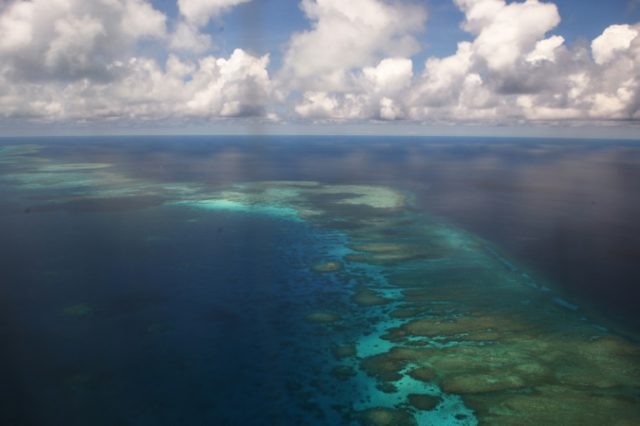China’s Ministry of Natural Resources on Tuesday announced an initiative to repair damage to coral reefs inflicted by its dubiously legal development of disputed islands in the South China Sea’s Spratly chain.
The announcement was somewhat ironic because China previously touted the island-building endeavors as “green projects” instead of the militaristic land grabs they obviously were.
The South China Morning Post reported on Wednesday that Beijing now claims it will construct facilities to reclaim coral around Fiery Cross, Subi, and Mischief reefs, which provided the backbones for the three largest artificial islands China has created in the Spratly group.
The project will purportedly encourage a “natural recovery” method for the damaged coral reefs “complemented by artificial methods and techniques developed especially for the Spratlys.”
When an international tribunal ruled in 2016 that China’s island-building spree had inflicted “severe harm” on the reefs, violated its “obligation to preserve and protect fragile ecosystems,” and “inflicted irreparable harm on the marine environment,” Beijing arrogantly discarded the ruling and insisted its construction projects would only enhance the health of the local ecosystem.
Most grimly amusing was China’s response when international observers were horrified by massive dredging ships ripping the coral reefs to pieces and essentially mulching them to provide construction material for Chinese military bases. The Chinese Foreign Ministry blithely insisted the ships were merely simulating “the natural process of sea storms blowing away and moving biological scraps which gradually evolve into an oasis on the sea.”
China’s state-run Xinhua news service used the Chinese names for the reefs to relay the Foreign Ministry’s new promises of ecological sensitivity:
The facilities on Yongshu, Zhubi and Meiji reefs will be mainly used for the protection and restoration of coral reefs, which are key to the ecological security of the Nansha Islands and the whole South China Sea region, the ministry said.
They will lead to better understanding of the coral reef ecosystem of the Nansha Islands and tailored conservation and rehabilitation measures, it also said.
On Oct. 31, the ministry launched marine observation stations on the three reefs, which are now offering regular information services including marine forecasts and disaster warnings to the international community and passing ships.
Fiery Cross, Subi, and Mischief Reefs are short of healthy natural coral formations these days, but they now boast plenty of anti-ship and surface-to-air missiles and radar jamming equipment. Subi, which was ruled a rightful possession of the Philippines by an international court, now sports an airstrip capable of handling Chinese bombers. Smaller Chinese military planes have landed on Fiery Cross and Mischief Reef.

COMMENTS
Please let us know if you're having issues with commenting.